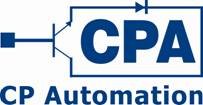 |
| EMC filter for solar power applications |
Roxburgh's distributor of the year for 2015, CP Automation, can help customers integrate the filters along with compatible inverters into their solar power systems.
Roxburgh's electromagnetic compatibility (EMC) filters are fitted on inverters to minimise harmful electromagnetic noise that can damage electrical equipment or cause spurious malfunctions
The high voltage model of the KMF series operates at a voltage rating of 690V, significantly more than competing products that usually only work up to 500V. The innovation came about after a world-leading manufacturer of solar inverters got in touch with Roxburgh and asked it to develop an EMC filter that worked at 690V instead of 600V. The 690V model has the same footprint as the 600V, resulting in significant space savings.
The KMF3420V works at a temperature rating of 65 degrees Celsius, as opposed to the industry norm, 50 degrees. This makes the filters perfect for the difficult conditions of photovoltaic power applications, which present high ambient temperature challenges.
"Renewable energy now provides approximately 18 per cent of global electricity generation," explained John Mitchell, global business development manager of CP Automation. “For that number to continue to rise, solar power generation and distribution needs to be as efficient as possible. That's why quality EMC filters are so important to the industry.
"Our KMF3420V was one of the first EMC filters to be rated at 690V in accordance with UL1283 Edition 6. Compliance with North American certification gives customers peace of mind globally and makes it easier to achieve local certifications for their finished products”
For more information about CP Automation's catalogue of Roxburgh EMC products, go to www.cpaltd.net.









